By Amina Chaudhri and Julie Waugh, on behalf of The Biography Clearinghouse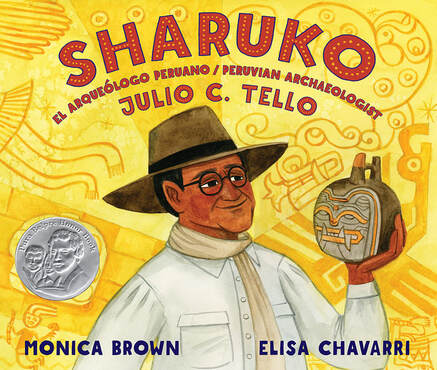 One of the most profoundly devastating schemes of the colonial project was to erase Indigenous knowledge: religious, intellectual, social, cultural, aesthetic, scientific. In the Afterword of Sharuko, Monica Brown extends readers’ knowledge of the importance of Julio C. Tello’s work as an archaeologist in undoing the damage of colonial erasure. He spent his life raising awareness about Indigenous Peruvian ways of knowing, as evidenced by his research. Julio C. Tello was Indigenous and spoke Quechua, so his investment in countering the dominant narrative was personal as well as professional. Today, he is a celebrated figure in Peru, and through Sharuko, young readers can come to value his accomplishments as well. This entry of The Biography Clearinghouse offers a variety of teaching and learning experiences to use with Sharuko: el Arqueólogo Peruano/Peruvian Archaeologist, a bilingual biography of Julio C. Tello, written by Monica Brown, and illustrated by Elisa Chavarri. In addition to a recorded interview with the author in which she discusses her research process and the craft of creating picturebook biographies, we include suggestions for learning about Peruvian textiles, the Quechua language, and variations on the trait of bravery. Below are two ideas inspired by Sharuko. Connecting the Past and the Present Sharuko is the biography of a man who lived from 1880 - 1947, yet his work as an archeologist and conservationist is relevant today. His legacy includes the Museum of Anthropology, in Lima Peru, that houses the artifacts he discovered and wrote about. His research spotlights the accomplishments of Indigenous Peruvians and tells the story of Peru’s past that colonialism tried to erase. In her interview, Monica Brown tells us about a “magic moment” in the process of creating this book, in which she imagined a Quechua word - sharuko- emblazoned across the front as its title. In this way she continues Tello’s legacy, using her privilege as an established writer to highlight the Quechua language and the contributions Tello, an Indigenous scholar, made to the world. Begin by reading Sharuko aloud with students, inviting them to note the chronology of his life, from boy to researcher, the people who supported him along the way, and his connections to history as depicted in the text and images. In analyzing this biography, teachers might scaffold students’ understandings of:
Thinking Like an Archeologist Sharing Sharuko can provide a similar introduction to the complexities and exciting puzzles that define the field of archeology. Archeology is about telling the human story. Invite your students to act as archeologists, researching, writing, and considering the different perspectives that inform archeological work. Teachers can find teaching ideas related to archeology on the website of The Society of American Archeology. The teaching and learning suggestions below are designed for teachers to plan experiences that involve thinking like an archeologist:
For more teaching and learning suggestions, visit the complete entry on Sharuko, on The Biography Clearinghouse website. Amina Chaudhri is an associate professor at Northeastern Illinois University in Chicago, where she teaches courses in children's literature, literacy, and social studies. She is a reviewer for Booklist and a former committee member of NCTE's Orbis Pictus Award for Outstanding Nonfiction for Children. Julie Waugh shares a 4th grade teaching position at Zaharis Elementary in Mesa, AZ and serves as an Inquiry Coach for Mesa Public Schools. She delights in the company of children surrounded and inspired by books. A longtime member of NCTE, and an enthusiastic newer member of CLA, Julie is a former committee member of NCTE's Orbis Pictus Award for Outstanding Nonfiction for Children. By Mary Ann Cappiello and Jenn Sanders, on behalf of The Biography Clearinghouse 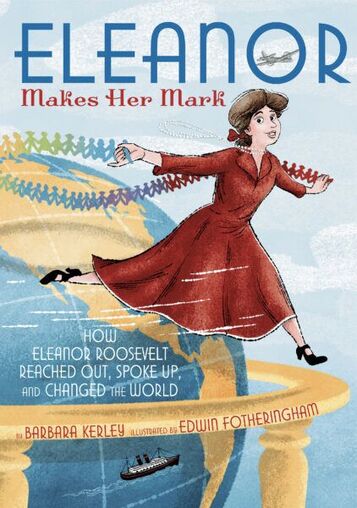 “The purpose of life, after all, is to live it, to taste experience to the utmost, to reach out eagerly and without fear.” This quote greets readers of Barbara Kerley and Edwin Fotheringham’s latest collaboration, Eleanor Makes Her Mark: How Eleanor Roosevelt Reached Out, Spoke Up, and Changed the World. Kerley drops her readers right into the busy preparations for Franklin Delano Roosevelt’s first inauguration, grounding readers in Eleanor’s public identity as the forthcoming First Lady. But then Kerley brings the readers back in time to Eleanor’s unhappy childhood and early adolescent years. Kerley’s characterization of Eleanor builds across the text: shy and quiet girl, engaged intellectual, socialite seeking purpose by teaching calisthenics in settlement houses and researching working conditions in garment factories, and, ultimately First Lady of the United States. As First Lady, Eleanor’s travels continued around the United States and across the Globe as she investigated working conditions, discrimination, and the effects of the devastation of The Great Depression and World War II. Kerley concludes the biography with Eleanor’s position as delegate to the newly formed United States General Assembly, working on the committee that authored the Universal Declaration of Human Rights. Throughout the book, illustrator Edwin Fotheringam works with visual metaphors to emphasize Eleanor’s unflagging energy and her ability to bring people together. In the cover illustration, Eleanor jumps off of a globe, streaming a banner of paper dolls holding hands that trails in her wake. Fotheringham peppers the book with swirling lines of motion, highlighting Eleanor’s boundless verve, vivacity, and constant travel. Fotheringham also continues the hand-holding motif throughout the book to reinforce the ways in which Eleanor Roosevelt brought people together and made them feel seen, heard, and respected. Paper dolls thread through the backgrounds, and Eleanor is often depicted holding hands or connected to the people with whom she is interacting, like one long, human, paper chain. Eleanor Roosevelt’s life work supporting families in under-resourced communities, creating safe working conditions, and promoting world peace has never been more relevant. While we have not lived through the same long-term economic devastation of The Great Depression, the COVID-19 pandemic has created an economic crisis for millions of Americans and billions across the globe. Congress and the White House are engaged in complex conversations and negotiations about the role of government, debating what social programs, safety nets, and infrastructure investments are appropriate in the 21st century; the same kinds of conversations Eleanor Roosevelt engaged in with her husband and their White House staff. The COVID-19 pandemic has revealed how very interconnected our world is, a theme exemplified in the life and work of Eleanor Roosevelt. Using the Investigate, Explore, and Create Model of The Biography Clearinghouse, we offer a range of critical teaching and learning experiences to use with Eleanor Makes Her Mark: How Eleanor Roosevelt Reached Out, Spoke Up, and Changed the World on our site. In our interview with Barbara Kerley and Edwin Fotheringham, you can learn about their research and creating processes. Highlighted here are two ideas inspired by the book. First Ladies and Social Media During our interview, Barb Kerley shared that she found a treasure trove of information about Eleanor Roosevelt’s daily life in archives of Eleanor’s (almost) daily column, “My Day,” which ran in papers across the country from 1935 to 1962. Laughing, Barb suggested that the column was Eleanor Roosevelt’s version of social media. After reading Eleanor Makes Her Mark, leverage Eleanor’s “My Day” column as an opportunity for your middle school students to explore how First Ladies have used the tools at their disposal to communicate directly with the public. To learn more about the column, you can explore the resources of The George Washington University’s Digital Eleanor Roosevelt Papers Project. Read her column by year or search for specific content across the years. After students have had an opportunity to read some columns, have them compare and contrast them with one another. What do they learn about Eleanor Roosevelt, and the circumstances of the world she lived in? How do the columns extend the understanding of Eleanor’s public life they received from Eleanor Makes Her Mark? How do they challenge their understanding? Next, provide students with the opportunity to compare and contrast how the current and most recent First Ladies have used social media to speak with the public. Because some comments on social media are not appropriate for tweens to read, we recommend that you select some tweets from each First Lady and share them with your students. You can choose from First Lady Jill Biden’s (@FLOTUS) Twitter account, former First Lady Melania Trump’s (@MELANIATRUMP) Twitter account or her archived @FLOTUS Twitter account, former First Lady Michele Obama’s current (@MichelleObama) Twitter account or her archived @FLOTUS Twitter account, and former First Lady Laura Bush’s current (@laurawbush) Twitter account. Synthesize the exploration by asking students to compare and contrast what they see as most valuable in the communications they explored. Why is it important for First Ladies--or First Gentlemen, or First Spouses--to communicate directly with the public? What kind of information is valuable for them to share, and why? Creating Diagrams to Add Information Writers and artists often choose to represent information visually with a diagram. Ed Fotheringham talked about his process of researching the floorplans of the White House and deciding how to show the inside of the White House. He ultimately settled on a cut-away diagram that is similar to a cross-section diagram. Diana Aston and Sylvia Long also use diagrams masterfully in their informational books An Egg is Quiet (2006) and A Seed is Sleepy (2007). Explore the power of diagrams to carry information with your students.
Visit The Biography Clearinghouse for several more teaching ideas for Eleanor Makes Her Mark and the other biography units we have on the website! Mary Ann Cappiello teaches courses in children’s literature and literacy methods at Lesley University, blogs about teaching with children’s literature at The Classroom Bookshelf, a School Library Journal blog, and is a former chair of NCTE’s Orbis Pictus Award for Outstanding Nonfiction K-8. Jennifer Sanders is an Associate Professor of Literacy Education at Oklahoma State University, specializing in representations of diversity in children’s and young adult literature and writing pedagogy. She is co-founder and co-chair of The Whippoorwill Book Award for Rural YA Literature and long-time member of CLA. By Mary Ann Cappiello & Donna Sabis Burns, on behalf of the Biography Clearinghouse 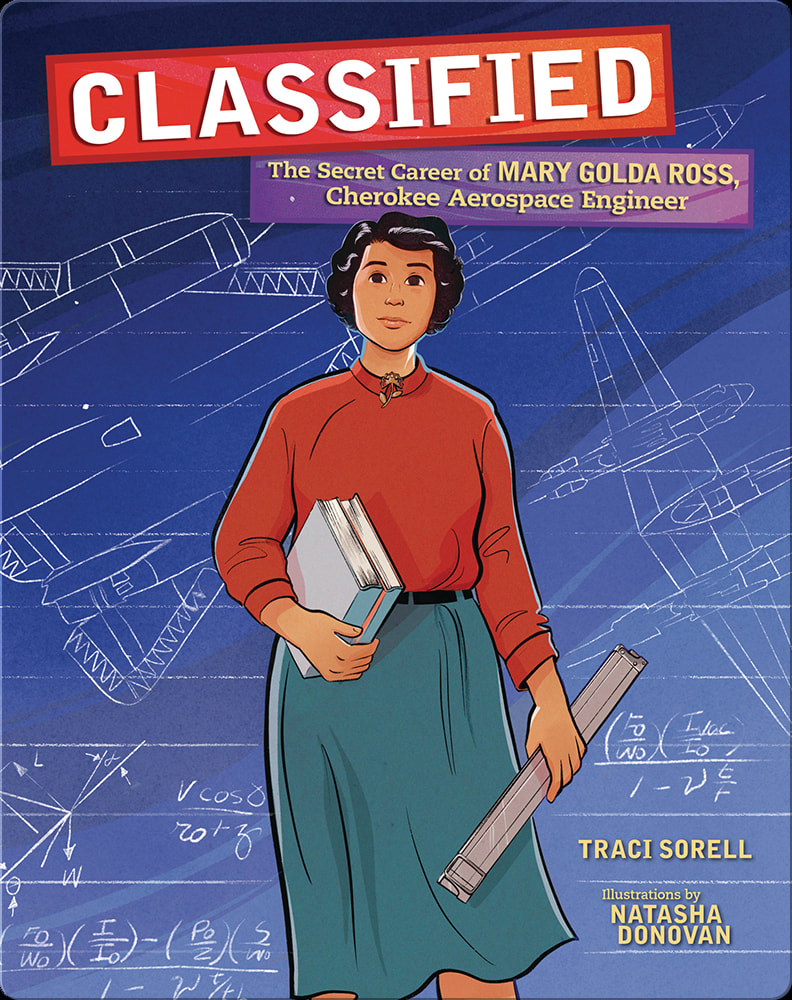 “Do the best you can and search out available knowledge and build on it,” said Mary Golda Ross in April 2008. This quote introduces and frames Classified: The Secret Career of Mary Golda Ross, Cherokee Aerospace Engineer, Cherokee author Traci Sorell’s and Métis illustrator Natasha Donovan’s 2021 picture book biography featured this month on The Biography Clearinghouse. Known as “Gold” to her family, Mary Golda Ross was a pioneer in multiple ways. A trained mathematician and educator-turned-engineer, she was the first female and the first Native American aerospace engineer in the United States. Mary’s intellect and penchant for problem-solving were invaluable as she helped research and design satellites, missiles, and rockets. Her work, much of which is still classified, was integral to the U.S. development of its aerospace program in the mid-20th century. Like many women entering traditionally male-dominated fields, Mary is considered a “Hidden Figure.” Fortified by her independence and tenacity, Mary carved out historical and professional space that had rarely—if ever—included women and minorities. And in doing so, Mary helped revolutionize our relationship with space. Independent and tenacious, Mary was the great-great-grandaughter of John Ross, the Cherokee Chief who led his people during and after they were forced to abandon their ancestral lands in the Southeast. Their migration to what is now Oklahoma, is known as the Trail of Tears. Throughout her career, Mary relied on her Cherokee values for guidance, and she credited her professional success to those values. Sorell uses these values to “bookend” Mary’s story. On the first opening spread, a red box catches the reader’s attention. Within it, Sorell informs the reader that Cherokee values are not written down, but rather passed down through generations of family members. The core values that shaped Mary’s life were “gaining skills in all areas of life (both within and out of the classroom), working collaboratively with others, remaining humble when others recognize your talents, and helping ensure equal education and opportunity for all” (p.2). These values ground the reader and serve as a preview to Mary’s life. At the conclusion of the book, Sorell returns to those values, offering readers the four values in the Cherokee syllabary, a transliteration, pronunciation, and then finally, English translation. Illustrator Natasha Donovan visually moves the reader through Mary’s life with a series of shifting images digitally rendered, ranging from close-ups of Mary’s classrooms to a bird’s eye view of her travels, zooming out to the larger vistas within her mind as she imagined and designed, zooming in on the many hands around a table working collaboratively to bring these inventions into existence. The illustrations highlight the tensions and opportunities that Mary encounters, and the role she played in an emerging field. Mary’s unique circumstances prompted her to reach out and mentor many women in science and mathematics across her long career. She traveled to high schools to mentor college bound seniors and advocate education in engineering and mathematics, and also advocated for career opportunities for fellow Native American and Alaska Natives. Across her career, Mary worked closely with so many - from scientists working in secret on cutting edge technology to young adults just beginning to build their professional identities. So far, 2021 has shown us the power and potential of science, from the COVID-19 vaccines that continue to be distributed across the globe to the ever-changing understanding of the virus’ variants. Scientists have modeled the ways in which their work is always collaborative. In contrast, 2021 has also shown us the power of the extremely wealthy to appropriate science and technology that has been developed for the benefit of the nation. The two richest men in the world, Jeff Bezos and Elon Musk, turned space travel into their personal pleasure. Was that part of Mary’s vision of interplanetary travel? Or was hers something more equitable, more in line with her Cherokee values of inclusivity and work for the common good?
Exploring ValuesFrom the first pages of the book to the last, author Traci Sorell affirms the significance of Cherokee values in Mary Golda Ross’s life. We discuss this in our interview with Traci and refer both to the red box that names Cherokee values on the verso page, as well as the information on Cherokee values in the backmatter. After reading Classified, ask students to share their understanding of what the word “values” means. Then ask students to share their understanding of the Cherokee values that are represented in the book. How do they define them in their own words? Next, ask students to make a list of the values that are important to them. Provide them with an opportunity to talk to one another in pairs or small groups about their values. How are their values similar and different from one another? How are the words they use to describe their values similar and different from one another? After they’ve had a chance to do this, allow them time to consider where their values come from. Are they influenced by the grown-ups in their lives? Their community? Their religion? Are their values influenced by their family cultural heritage(s), race, or ethnicity(ies)? How do their education influence their values, and how do their values influence their education? Finally, ask students to look again at the four Cherokee values discussed in the back matter. What connections do students see between the values discussed in their group and the Cherokee values that guided Mary’s life? Mentoring Others Mary Golda Ross was known for the mentoring work she did, supporting younger women and indigenous women entering the field of STEM. What kind of mentoring exists in your school? In the lives of your students and their families? In your community?
The Space Race as Collaboration As an aerospace engineer, Mary Golda Ross worked on the top-secret Skunk Works Project of Lockheed Martin. As Sorell writes in Classified, Skunk Works research contributed to the Apollo space missions and the eventual moon walk by U.S. astronauts in 1969. You can show students an example of her work: Planetary Flight Handbook, No. 9, NASA. What other women were involved in Space Race research? After reading Classified, provide time for students to explore these other books about the Space Race.
In Classified, Sorrell notes that “whenever Mary received awards, she always thanked her colleagues because she knew no one person deserved credit for what everyone had done together.” As students explore whichever permutation of texts you select, ask them to consider the ways in which teamwork is represented. In what ways are individuals featured? In what ways is their collective and collaborative work represented? Use this conversation as an opportunity to discuss the process of “doing science” as collaborative rather than singular work. This can also serve as a springboard to critical considerations regarding the ways inventions and scientific breakthroughs are often attributed to specific individuals instead of to the team as a whole, changing our understanding of what makes change possible. Change happens when groups of people work together over time. To see more classroom possibilities and helpful resources connected to Classified: The Secret Career of Mary Golda Ross, Cherokee Aerospace Engineer, visit The Biography Clearinghouse. Additionally, we’d love to hear how the interview and these ideas inspired you. Email us at [email protected] with your connections, creations, and questions. Mary Ann Cappiello teaches courses in children’s literature and literacy methods at Lesley University, blogs about teaching with children’s literature at The Classroom Bookshelf, a School Library Journal blog, and is a former chair of NCTE’s Orbis Pictus Award for Outstanding Nonfiction K-8.
Donna Sabis-Burns, Ph.D., an enrolled citizen of the Upper Mohawk-Turtle Clan, is a Group Leader in the Office of Indian Education at the U.S. Department of Education* in Washington, D.C. She is a Board Member (2020-2022) with the Children's Literature Assembly, Co-Chair of the Diversity, Equity, and Inclusivity Committee, and Co-Chair of the 2021 CLA Breakfast meeting (NCTE). *The views expressed herein do not necessarily represent the positions or policies of the U.S. Department of Education. No official endorsement by the U.S. Department of Education of any product, commodity, service, or enterprise mentioned herein is intended or should be inferred. FOR CLA MEMBERS
CLA Board of Directors Elections
By Patricia E. Bandré Sport has the power to change the world. It has the power to inspire. It has the power to unite people in a way that little else does.” 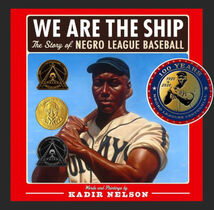 For approximately four weeks this spring, fourth-grade students at Oakdale Elementary in Salina, Kansas read and discussed, We are the Ship: The Story of Negro League Baseball (Nelson, 2008) as part of a language arts unit. Students found the book highly engaging and the art extraordinary. Numerous discussions occurred as students read, wondered, and conducted research in order to learn more about Negro League players and team owners. Ideas in the book sparked a variety of emotions and prompted numerous conversations about how people treated one another then, how they treat one another today, and what it means to break barriers. When the unit concluded, teachers Joy Fox-Jensen and Mary Plott desired to capitalize on students’ enthusiasm for the book and their interest in sports. They wanted to introduce students to other African American athletes who had broken barriers and pursued their dreams. In my role as the district reading instructional specialist, I worked with the teachers to plan and conduct a six-day mini-unit. We chose four books for our study: Above the Rim: How Elgin Baylor Changed Basketball (Bryant, 2020), Playing to Win: The Story of Althea Gibson (Deans, 2007), A Nation’s Hope: The Story of Boxing Legend Joe Louis (de la Peña, 2011), and Wilma Unlimited: How Wilma Rudolph Became the World’s Fastest Woman (Krull, 1996). We intentionally chose to introduce African American men and women who excelled in sports other than baseball and faced barriers in addition to those posed by race; poverty, illness, and physical disabilities provided further challenges for the athletes we selected. We also wanted students to experience a variety of writing styles and different types of illustrations. Finally, we wished to select athletes to whom the students could connect. We wanted them to see how these barrier-breaking athletes valued determination and perseverance, realized the importance of compassion, and understood how seemingly simple actions spoke louder than words. Our goal was to help the fourth graders begin to see how they could become barrier-breakers, too.  Because students demonstrated such a high level of interest in Kadir Nelson’s paintings when reading We are the Ship, we elected to begin the study with a short exploration of book design. I used information from the article Picturebooks as Aesthetic Objects (Sipe, 2001) to help frame our conversations. We are the Ship (Nelson, 2008), along with two classic picturebooks, Where the Wild Things Are (Sendak, 1963) and The Little House (Burton, 1942), served as models. After reading the two picturebooks aloud, we took a focused look at all three books. As part of our discussion, I prompted students to consider how the size and shape of a book might add to its meaning. Students contemplated the image on the dust jacket and cover of each book – were these images the same or different? Why? They looked closely at the endpapers and wondered about the significance of the colors and the images, if there were any. We considered the color palette each artist used and discussed how those colors suited the text and made them feel. Students noticed the different points of view Nelson employed in We are the Ship; individual players appeared to be larger than life, but in the team paintings, each member seemed equally significant. Students greatly admired Nelson’s full-bleed art, but also found the way Sendak (1963) placed frames around his illustrations in Where the Wild Things Are to be intriguing. Students were quick to notice how the size of the frames changed, disappeared, and reappeared as we watched the main character, Max, journey in and out of his imaginary world. Ultimately, this exploration created a heightened sense of awareness and resulted in careful observations, thoughtful questions, and insightful responses about the other books we read. 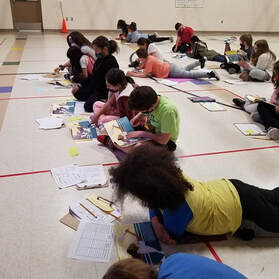 Over the next four sessions, students interacted with a new book each day. Each initial reading was conducted as a read-aloud or a combination of listening and partner reading. I purposely did not stop to talk about the book during its first reading. Rather, I wanted students to take in the language and art on their own in order to develop a first draft understanding (Barnhouse and Vinton, 2012). Following this process allowed them to come to their own conclusions about the athletes and the barriers faced without the influence of their peers. Instead of talking, students took two sticky notes and recorded one thing they noticed about the book and one fact they learned during the first read. Students shared their “Notice and Learn” notes with a shoulder partner and posted them for others to read. Next, we dove back into each book and revisited specific passages in order to explore the way the authors used language to provide clues as to the personality of each athlete. An organizer modeled after the Reading with Attitude protocol (Buehl, 2014) assisted to facilitate our conversations. As students reread certain passages from each book, they contemplated the athlete’s and author’s emotions and shared how the text made them feel as the reader. Discussions ensued about the language in the text and how it prompted them to infer the presence of these emotions. Additionally, students made specific references to the art in each book and how it affected their response. As students met each new athlete, the comments they shared made it clear that they realized the athletes were different from one another, but connected by common threads
References
Barnhouse, D., & Vinton, V. (2012). What readers really do: Teaching the process of meaning making. Portsmouth, NH: Heinemann.
Buehl, D. (2014). Classroom strategies for interactive learning, (4th ed.). International Reading Association: Newark, DE. Sipe, L. R. (2001). Picturebooks as aesthetic objects. Literacy Teaching and Learning, 6(1), 23-42. Children’s Books
Bryant, J. (2020). Above the rim: How Elgin Baylor changed basketball. Illus. by F. Morrison. Abrams Books for Young Readers: New York, NY. Burton, V. L. (1942). The little house. Boston, MA: Houghton Mifflin Company. Deans, K. (2007). Playing to win: The story of Althea Gibson. Illus. by E. Brown. Holiday House: New York, NY. de la Peña, M. (2011). A nation’s hope: The story of boxing legend Joe Louis. Illus. by K. Nelson. Dial Books for Young Readers: New York, NY. Krull, K. (1996). Wilma unlimited: How Wilma Rudolph became the world’s fastest woman. Illus. by D. Diaz. Houghton Mifflin Harcourt: Boston, MA. Sendak, M. (1963). Where the wild things are. HarperCollins Publishers: New York, NY. Patricia E. Bandré, Ph.D., is the reading instructional specialist for USD 305 Public Schools, Salina, KS and serves as treasurer for CLA. Joy Fox-Jensen and Mary Plott are fourth grade teachers at Oakdale Elementary School, USD 305 Public Schools, Salina, KS. We wish to thank the Salina Education Foundation for funding this project. It’s a Slam Dunk! Aiming High with Jen Bryant’s Above the Rim: How Elgin Baylor Changed Basketball5/11/2021
By Donna Sabis-Burns and Amina Chaudhri, on behalf of The Biography Clearinghouse
Please visit The Biography Clearinghouse for an interview with Jen Bryant and a range of critical teaching and learning experiences to use with Above the Rim. Highlighted here are a few teaching ideas inspired by Above the Rim. The full book entry is available at the Biography Clearinghouse. Literary and Figurative Language Jen Bryant wrote Above the Rim in prose verse - a form of writing that does not use a rhyme scheme or rhythm but is formatted to look distinctive on the page, and makes use of word and line spacing to create an effect. The reader must carefully follow the punctuation in order to read prose verse fluently rather than pausing at the end of each line. This form also allows the writer to isolate particular sentences, placing them on lines of their own, which can serve to call attention to them. Bryant does a beautiful job in capturing the rich emotion of Elgin Baylor through careful word choice and line spacing.
Analyzing Character In her interview, Jen Bryant frames her work as a writer with a quote from the poet, Nikki Giovanni: "Writers don't write from experience, they write from empathy." She adds that she hopes her readers will empathize with Elgin Baylor and understand him in the context of his environment. Above the Rim characterizes Elgin as persistent, humble, brave, and more and as such, can be used to teach about character traits using text evidence.
Donna Sabis-Burns, Ph.D., an enrolled citizen of the Upper Mohawk-Turtle Clan, is a Group Leader in the Office of Indian Education at the U.S. Department of Education* in Washington, D.C. She is a Board Member (2020-2022) with the Children's Literature Assembly, Co-Chair of the 2021 CLA Breakfast meeting (NCTE), and Co-Chair of the Diversity, Equity and Inclusivity Committee at CLA.
Amina Chaudhri is an associate professor at Northeastern Illinois University in Chicago, where she teaches courses in children's literature, literacy, and social studies. She is a reviewer for Booklist and a former committee member of NCTE's Orbis Pictus Award for Outstanding Nonfiction for Children. *The views expressed herein do not necessarily represent the positions or policies of the U.S. Department of Education. No official endorsement by the U.S. Department of Education of any product, commodity, service, or enterprise mentioned herein is intended or should be inferred. BY JENNIFER M. GRAFF & JOYCE BALCOS BUTLER, ON BEHALF OF THE BIOGRAPHY CLEARINGHOUSE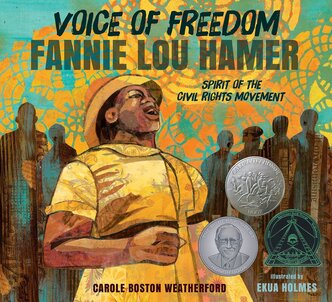 Our current celebration of poetry as a powerful cultural artifact and the national dialogue about voting rights generated by the introduction of 300+ legislative voting-restriction and 800+ voting-expansion bills in 47 states have inspired a rereading of the evocative, award-winning picturebook biography, Voice of Freedom: Fannie Lou Hamer, Spirit of the Civil Rights Movement. Written by Carole Boston Weatherford, illustrated by Ekua Holmes, and published by Candlewick Press in 2015, Voice of Freedom offers a vivid portrait of the life and legacy of civil rights activist, Fannie Lou Hamer. Her famous statement, “All my life I’ve been sick and tired. Now I’m sick and tired of being sick and tired” (p.18) serves as a testimonial to the psychological and physiological effects of the injustices and violence inflicted upon Hamer and other Black community members in Mississippi. Additionally, Hamer’s statement signifies her tenacity, conviction, and unwavering fight for voting rights, congressional representation, and other critical components of racial equality until her death in 1977.
Below we feature one of two time-gradated teaching recommendations included in the Create section of the Voice of Freedom book entry. Youth As Agents of Change in Local CommunitiesWeatherford begins Voice of Freedom with Hamer’s own words: “The truest thing that we have in this country at this time is little children . . . . If they think you’ve made a mistake, kids speak out.” Pairing Hamer’s advocacy detailed in Voice of Freedom with contemporary youth activists, guide students in their exploration of how they can (or continue to) be agents of change in their communities.
To see more classroom possibilities and helpful resources connected to Voice of Freedom: Fannie Lou Hamer, Spirit of the Civil Rights Movement, visit the Book Entry at The Biography Clearinghouse. Additionally, we’d love to hear how the interview and these ideas inspired you. Email us at [email protected] with your connections, creations, and questions. Jennifer M. Graff is an Associate Professor in the Department of Language and Literacy Education at the University of Georgia where her scholarship focuses on diverse children’s literature and early childhood literacy practices. She is a former committee member of NCTE’s Orbis Pictus Award for Outstanding Nonfiction K-8, and has served in multiple leadership roles throughout her 15+ year CLA membership. Joyce Balcos Butler is a fifth-grade teacher in Winder, Georgia, where she focuses on implementing social justice learning through content areas. She is a National Writing Project Teacher Consultant, a Red Clay Writing Fellow at the University of Georgia, and a member of CLA. BY JENNIFER SANDERS & COURTNEY SHIMEK, ON BEHALF OF THE BIOGRAPHY CLEARINGHOUSE 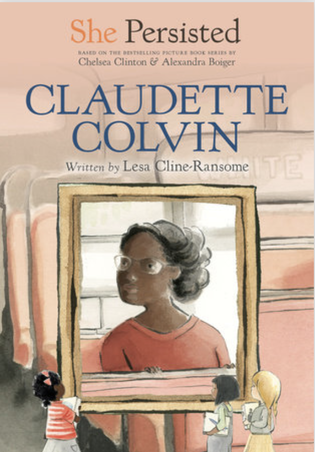 Many people have heard of Rosa Parks’ role in the Montgomery Bus Boycott, but few know that Claudette Colvin resisted bus segregation months before. Lesa Cline-Ransome’s new biography, She Persisted: Claudette Colvin, published by Penguin Random House, highlights 15 year-old Claudette’s role in the civil rights movement of the 1950s. Influenced by her teachers’ lessons on Black history, Claudette was armed with the courage of knowledge when she defied a bus driver’s order to move for a white passenger. When Claudette recalled that moment, she said, “Harriet Tubman’s hands were pushing down on one shoulder and Sojourner Truth’s hands were pushing down on the other shoulder… I couldn’t move” (Cline-Ransome, 2021, p.26). Claudette’s frustration about the injustices she witnessed in her life, including the loss of her younger sister to polio, spurred her actions that brought “the revolution to Montgomery” (2021, p.31). Cline-Ransome highlights these frustrations and mirrors Claudette’s curious, inquisitive nature by employing a question and answer secondary text structure throughout the biography. Cline-Ransome’s transitional chapter book about Claudette Colvin is currently featured on The Biography Clearinghouse . The crafted teaching guide includes information about three other women who resisted segregated bus policies before Rosa Parks and took the fight to federal court in the 1956 case Browder vs. Gayle. This book debunks historical myths and tells a fuller, more inclusive history of the individual and collective actions of people of color fighting oppression. Two of the plaintiffs in that court case were teenagers: Claudette Colvin was 15, and Mary Louise Smith was 18. In our interview, Lesa Cline-Ransome noted the connection between these young women’s activism and today’s young people serving as leaders of environmental and civil rights movements. This book can serve as a springboard for exploring present-day youth social activism with students. Operating within the Investigate, Explore, and Create Model of the Biography Clearinghouse, we designed teaching ideas to accompany She Persisted: Claudette Colvin.
Create |
If you have 1-2 hours... |
If you have 1-2 days... |
If you have 1-2 weeks... |
After reading She Persisted: Claudette Colvin, have students do a quick write about the Montgomery Bus Boycott. Ask them to generate questions they still have about the movement or these events in history. As a whole group, create an anchor chart of students’ questions. |
Jigsaw: Group 1: Put students into 4-6 groups (group A, B, C, etc.) and have them select one text from the set above. Give each group time to read their text, select important information, and look for answers to their personal questions (from the 1-2 hours activity). Group 2: Regroup the students with one person from each original group in each new group (i.e., one student from A, B, and C, etc.). Each student shares what they learned from the text they read with their first group. Have each group select one question they want to explore about the event and try to answer during this group share. Debrief with the whole class about what they learned. |
Using Cline-Ransome’s writing as a mentor, create a shared book that includes questions students asked and answers they found during the jigsaw. Students can title each chapter with the question, like Cline-Ransome did in She Persisted: Claudette Colvin, and have students answer that question in that section. “Publish” this book and display it for visitors to read and/or place in your classroom library. |
|
To see more classroom possibilities and helpful resources connected to She Persisted: Claudete Colvin, visit our Book Entry at The Biography Clearinghouse. Additionally, we’d love to hear how the interview and these ideas inspired you. Email us at [email protected] with your connections, creations, questions. Citation
Kristo, J. V., & Bamford, R. A. (2004). Nonfiction in focus: A comprehensive framework for helping students become independent readers and writers of nonfiction, K-6. Scholastic Professional Books.
|
Courtney Shimek is an Assistant Professor in the department of Curriculum & Instruction/Literacy Studies at West Virginia University. She has been a CLA member since 2015.
BY ERIKA THULIN DAWES & XENIA HADJIOANNOU, ON BEHALF OF THE BIOGRAPHY CLEARINGHOUSE
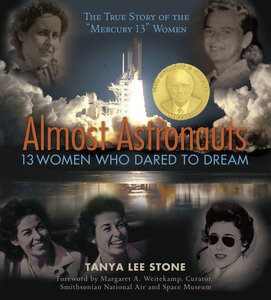
As we continue to work toward greater equality for women, here in the United States and globally, it is critical to share with young people the stories of women across history who have worked toward breaking boundaries for themselves and for other women. Tanya Lee Stone’s Almost Astronauts, 13 Women Who Dared to Dream is an important narrative in that history. Stone relates the story of women’s eventual entry to NASA’s space program by focusing on the stories of 13 women who dreamed of being astronauts and proved themselves through a private testing program in the early 1960s to be just as capable as their male counterparts.
Almost Astronauts is a history text that is highly biographical. It features life stories, but it is not a traditionally organized biography of a single individual or a collection of biographies. To shape the historical narrative, Stone employs several biographer techniques such as well researched and documented character sketches, biographical blurbs, and narrative episodes. The latter are of particular note, as Stone’s vivid descriptions place the reader in the moment with these women as they pursue their dreams. The book is replete with photographs, as well as reproductions and descriptions of primary source documents and artifacts that support and enhance the narrated events but also help establish their historical context.
With a compelling narrative, engaging life stories, and immersive description, Almost Astronauts is a versatile teaching tool for middle and high school classrooms. It fits well in units on space exploration, women’s history, boundary breaking, gender stereotyping, and narrative writing. In our entry on The Biography Clearinghouse, we use the Investigate, Explore, and Create Model to present ideas for using this book in the classroom as a read aloud, a text to use in literature circles, a mentor text, and a resource text.
|
Read Aloud:
We provide resources to carry out a multimedia-enhanced read aloud, during which you would share and discuss primary and secondary visual, audio, and video resources that enhance students’ understanding of context, character and theme. Literature Circles Title:
We suggest Almost Astronauts as one title in a text set of long-form picturebooks and chapter books focusing on the theme: “Women Breaking Boundaries for Self and Others.” Groups of students reading these titles would create response projects so that the class can compare the childhoods, accomplishments, and challenges of the women featured in the books. Mentor Text:
Stone’s engaging writing style makes Almost Astronauts an ideal mentor text for nonfiction narrative techniques, such as “explode the moment” for emphasizing key moments and turning points, (Harper, 1997) and ‘In Medias Res’ as a technique to immerse the reader in action. Resource Text: Taking a critical literacy stance, Almost Astronauts becomes a valuable resource in a study of persistent gender stereotypes and discriminatory practices. By providing details about popular culture and examples from media at the time, Stone offers young readers the opportunity to unpack and compare messaging about women and their expected behaviors and possibilities for achievement. These lenses can then be applied to contemporary popular culture texts and media so that students can discuss what has changed and what has not and consider action toward equity. |
CHECK OUT THE BOOK ENTRY |
Composing Multimodal Multigenre Biographies
In this recommendation, students have the opportunity to engage in their own biography research and experiment with biography composition through a multimodal, multigenre approach.
If you have 1-2 hours... |
If you have 1-2 days... |
If you have 1-2 weeks... |
Working in pairs or a small group, students select a contemporary or historical figure whose life fascinates them. Using a set of school-approved sources, have students compile a collection of links and other resources that represent the life story of their subject. Invite students to create a virtual biography exhibit through a gallery board platform (e.g. Padlet) for the figure they chose. The exhibit should be purposefully curated and annotated or captioned to tell the life story of their subject and emphasize the characteristics that intrigue them. |
Building on the collection of resources they have developed for the virtual biography exhibit, have students in their pairs or small groups create a Pecha Kucha style presentation. A Pecha Kucha presentation is a presentation featuring 20 images/slides appearing on the screen for 20 seconds each. Check out this video for a short tutorial. |
Have students use their virtual biography exhibit as the basis for producing a biographical documentary of their chosen subject that incorporates primary source documents, artifacts, photos, video, etc. and multiple pieces in different genres and modalities (written language, visual, audio, video). Depending on the technology affordances of your setting and your students’ experience with video editing, the biographical documentary can be created using such tools as iMovie, a PowerPoint presentation narrated and exported as a video file, or a recorded Zoom session using screen share. There also are several free video editing apps students can utilize. Teaching students how to cite their resources would be a vital component of this project. |
References
Harper, L. (1997). The writer’s toolbox: Five tools for active revision instruction. Language Arts, 74(3), 193–200.
Xenia Hadjioannou is an Associate Professor of Language and Literacy Education at the Harrisburg campus of Penn State University where she teaches and works with pre- and in-service teachers through various courses in language and literacy methodology. She is the co-director of the Capital Area Writing Project, the Vice President and Website Manager of the Children's Literature Assembly, and a co-editor of The CLA Blog.
BY AMINA CHAUDHRI AND MARY ANN CAPPIELLO, ON BEHALF OF THE BIOGRAPHY CLEARINGHOUSE
and the stories he preserved,
reunited families
torn apart by slavery.
Because that’s what stories can do.
Protest injustice.
Sooth. Teach. Inspire. Connect.
Stories save lives.”
- Don Tate, from William Still and His Freedom Stories: The Father of the Underground Railroad
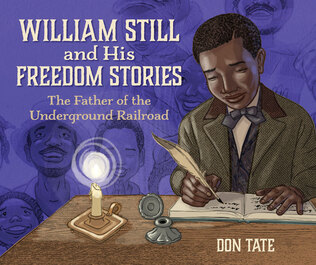
Don Tate’s picturebook biography William Still and His Freedom Stories: The Father of the Underground Railroad, this month’s featured text on The Biography Clearinghouse, is an important text to help make this change in elementary and middle school classrooms. William Still and his Freedom Stories is one of several recent publications that highlights the role of African Americans in the freedom struggle, countering the narrative that freedom from slavery depended on the actions of whites.
A precise, linear narrative takes readers through significant events that shaped William Still’s understanding of the world and his role in making it better for African Americans. Readers follow Still from childhood to adulthood, bearing witness to his desire to learn, the grueling labor he endured to earn a living, and eventually, the risks he took to secure freedom for enslaved people and his post-Civil War activism to fight segregation. This deeply-researched and powerfully-illustrated book has layers of curricular potential: as a read aloud, as a mentor text for literacy skill development, as a model of the genre of biography, as an important piece of history, and much more.
Operating within the Investigate, Explore, and Create Model of the Biography Clearinghouse, we designed teaching ideas geared toward literacy and content area learning as well as opportunities for socio-emotional learning and strengthening community connections using William Still and His Freedom Stories.
Featured here are two teaching ideas inspired by William Still and His Freedom Stories. The first engages students deeply with the text itself - its form and content, and the second extends learning beyond this picturebook to explore multiple sources for inquiry and research.
William Still and his Freedom Stories as a Mentor Text for Close Reading, Writing, and Research.
Don Tate, like William Still, understands the importance of word choice and organization of ideas in writing. William Still and his Freedom Stories can be used as a mentor text to teach these literacy concepts. The brevity of the picturebook lends itself well to repeated readings and analysis of the precise language Tate employs to convey his message. A writer’s message is effective if it evokes a response in the reader. The suggestions below invite students to reflect deeply on the text and their own responses in the process of making meaning.
|
From the Biography Clearinghouse
|
If you have 1-2 hours…. |
If you have 1-2 days… |
If you have 1-2 weeks…. |
Teachers model the Double Entry Journal strategy for responding to text with a focus on text analysis/close reading using a selection of quotes from William Still and his Freedom Stories:
|
William Still’s writing was a form of activism because it contributed to the work of changing people’s lives and resisting a brutal system. Compare and contrast this form of activism with the work done by other historical and contemporary figures in other biographies. A graphic organizer such as a T Chart can help students organize their observations. Next, following a discussion, students can identify the skills and talents these subjects brought to their work. Finally, they can extend their thinking by listing other ways people can use their skills (such as in art, music, sports etc.) in order to build awareness and create change. This list can lead to inquiry projects. |
When students have understood the concept of turning points as life-altering experiences, and as literary devices that authors use to further their ideas, they can synthesize their learning within the context of studying biographies. One project could be to create a biography of someone in their community with specific requirements including elements found in William Still and his Freedom Stories. These include but are not limited to: childhood, youth, and adult phases of life; ideas and/or people who were influential; and 2-3 turning points that were particularly salient in the person’s life. If possible, the student could research the person’s context in order to understand the various factors that inform decisions and actions. The project can be taken through all the stages of the writing process and completed in pairs or groups. Final projects could be written, illustrated, recorded, dramatized or created in any way that suits the form and content. |
Advocating for and Learning from 19th Century Black-Authored Texts
If you have 1-2 hours…. |
If you have 1-2 days… |
If you have 1-2 weeks…. |
After reading William Still and His Freedom Stories, provide students with the opportunity to read pages from Journal C of the Underground Railroad. Support students as you examine the information, as this material is painful to read. What kinds of information did Still document to help reunite loved ones? What are some connections students are able to make across the journal? How were those fleeing slavery similar to one another? How were their circumstances different from one another? |
After exploring Still’s own writing, have students consider his personal path to literacy. How might his writing voice and identity have been shaped by the texts that he read? In the narrative, Don Tate notes that Still read The Colored American. “An “anti-slavery newspaper,/it was owned and published by Black people.” Share this description of the newspaper with students. Next, have students spend some time reading through digital copies of The Colored American from The Center for Research Libraries. What do they notice about the information in the newspaper? Have students take notes on what they are learning about the lives of free and enslaved Blacks at the time of the newspaper’s publication. |
The Historical Society of Pennsylvania has created a prototype of a digital database, the “Family Ties on the Underground Railroad” project, that connects information from Journal C with Still’s 1872 book The Underground Rail Road. You and your students can access the prototype with the codes available on the landing page. Provide students with time to explore the prototype and see the ways in which it uses information from the two texts and allows us to learn more about Black individuals and communities “geographically and chronologically.” Students can learn more about the process of putting the prototype together via the blog entries available on the right margin of the site. Next, you might partner with your local historical society to see what you can learn about Black history in your area from the texts and artifacts from the collection. How can your students raise awareness of that history? What new texts can they create in response to their learning? Allow students to make those choices and determine a way to share their texts with your local community. You could also inform students of the Pennsylvania Historical Society’s efforts to raise money to expand the digital “Family Ties on the Underground Railroad” project. Have students brainstorm ways to raise both awareness and funding for this important project and then carry them out, using their literacy skills as a force for good like William Still. |
Mary Ann Cappiello teaches courses in children’s literature and literacy methods at Lesley University, blogs about teaching with children’s literature at The Classroom Bookshelf, a School Library Journal blog, and is a former chair of NCTE’s Orbis Pictus Award for Outstanding Nonfiction K-8.
By Courtney Shimek, on behalf of The Biography Clearinghouse
As we maintain our "new normal" of vacillating between online, hybrid, and in-class instruction, reading aloud continues to be a constant beacon of inspiration and connection in our teaching. Our youth are navigating the same chaotic and ever-changing world; given that biographies model the complexities of this world, sharing these perspectives with youth is vital. As such, I share here 3 tips for reading biographies aloud and a few illustrative examples of high-quality biographies.
Tip #1: Discuss the Visual Features
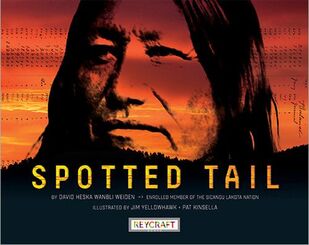
Tip #2: Back Matter Matters
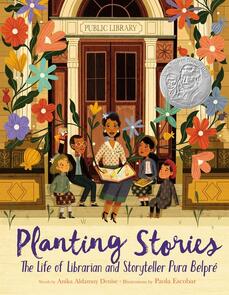
Tip #3: Revisit Writer’s Language
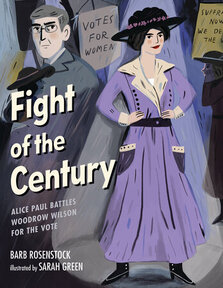
|
The six exemplar biographies referenced in this post are just some of the contemporary picturebook biographies that evoke engaging, artistic, and dynamic read-alouds. If you’re interested to know more about biographies and how to include them in your curriculum, join Tanya Lee Stone, Lesa Cline Ransome, Barb Rosenstock, and members of The Biography Clearinghouse and the Children’s Literature Assembly, Xenia Hadjioannou and Mary Ann Cappiello, as they engage in conversations about biographies on December 9th from 6:00-7:00 pm EST on Stimola Live.
|
Previous posts from the Biography Clearinghouse
Exploring Representation and Advocacy in Government with "What Do You Do with a Voice Like That?" Studying Science Processes with Otis and Will Discover the Deep: The Record Setting Dive of the Bathysphere 20 Biographies for 2020 Ideas for Change with Tonya Bolden’s Maritcha: A Nineteenth-Century American Girl The Biography Clearinghouse: Creating, Crafting and Connecting |
References
Maclear, K., & Morstad, J. (2019). It began with a page: How Gyo Fujikawa drew the way. HarperCollins.
Nelson, V. M., & James, G. C. (2019). Let ‘er buck!: George Fletcher, the people’s champion. Carolrhoda Books.
Rosenstock, B., & Green, S. (2020). Fight of the century: Alice Paul battles Woodrow Wilson for the vote. Calkins Creek.
Weiden, D. H. W., Yellowtail, J., & Kinsella, P. (2019). Spotted tail. Reycraft Books.
Wittenstein, B. & Pinkney, J. (2019). A place to land: Martin Luther King Jr. and the speech that inspired a nation. Neal Porter Books
Authors:
CLA Members
Supporting PreK-12 and university teachers as they share children’s literature with their students in all classroom contexts.
The opinions and ideas posted in the individual entries are those of the individual authors and do not necessarily reflect the opinions or views of CLA or the Blog Editors.
Blog Editors
contribute to the blog
If you are a current CLA member and you would like to contribute a post to the CLA Blog, please read the Instructions to Authors and email co-editor Liz Thackeray Nelson with your idea.
Archives
May 2024
April 2024
March 2024
February 2024
January 2024
December 2023
November 2023
October 2023
September 2023
August 2023
May 2023
April 2023
March 2023
December 2022
November 2022
October 2022
September 2022
August 2022
June 2022
May 2022
April 2022
March 2022
February 2022
January 2022
December 2021
November 2021
October 2021
September 2021
August 2021
June 2021
May 2021
April 2021
March 2021
February 2021
January 2021
December 2020
November 2020
October 2020
September 2020
August 2020
June 2020
May 2020
April 2020
March 2020
Categories
All
Activism
Advocacy
African American Literature
Agency
All Grades
American Indian
Antiracism
Art
Asian American
Authors
Award Books
Awards
Back To School
Barbara Kiefer
Biography
Black Culture
Black Freedom Movement
Bonnie Campbell Hill Award
Book Bans
Book Challenges
Book Discussion Guides
Censorship
Chapter Books
Children's Literature
Civil Rights Movement
CLA Auction
CLA Breakfast
CLA Expert Class
Classroom Ideas
Collaboration
Comprehension Strategies
Contemporary Realistic Fiction
COVID
Creativity
Creativity Sponsors
Critical Literacy
Crossover Literature
Cultural Relevance
Culture
Current Events
Digital Literacy
Disciplinary Literacy
Distance Learning
Diverse Books
Diversity
Early Chapter Books
Emergent Bilinguals
Endowment
Family Literacy
First Week Books
First Week Of School
Garden
Global Children’s And Adolescent Literature
Global Children’s And Adolescent Literature
Global Literature
Graduate
Graduate School
Graphic Novel
High School
Historical Fiction
Holocaust
Identity
Illustrators
Indigenous
Indigenous Stories
Innovators
Intercultural Understanding
Intermediate Grades
International Children's Literature
Journal Of Children's Literature
Language Arts
Language Learners
LCBTQ+ Books
Librarians
Literacy Leadership
#MeToo Movement
Middle Grade Literature
Middle Grades
Middle School
Mindfulness
Multiliteracies
Museum
Native Americans
Nature
NCBLA List
NCTE
NCTE 2023
Neurodiversity
Nonfiction Books
Notables
Nurturing Lifelong Readers
Outside
#OwnVoices
Picturebooks
Picture Books
Poetic Picturebooks
Poetry
Preschool
Primary Grades
Primary Sources
Professional Resources
Reading Engagement
Research
Science
Science Fiction
Self-selected Texts
Small Publishers And Imprints
Social Justice
Social Media
Social Studies
Sports Books
STEAM
STEM
Storytelling
Summer Camps
Summer Programs
Teacher
Teaching Reading
Teaching Resources
Teaching Writing
Text Sets
The Arts
Tradition
Translanguaging
Trauma
Tribute
Ukraine
Undergraduate
Using Technology
Verse Novels
Virtual Library
Vivian Yenika-Agbaw Student Conference Grant
Vocabulary
War
#WeNeedDiverseBooks
YA Lit
Young Adult Literature



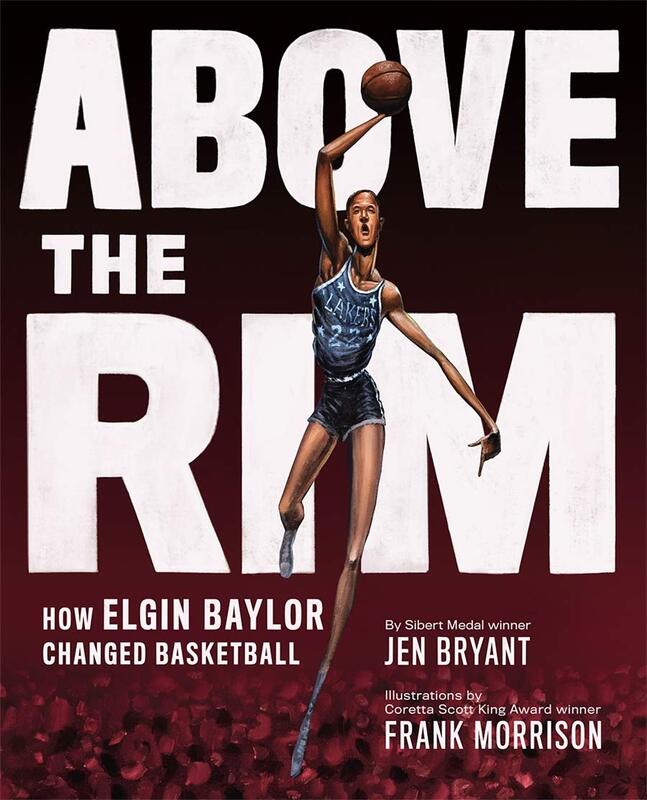
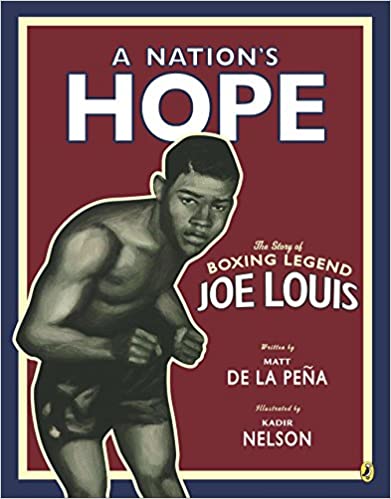
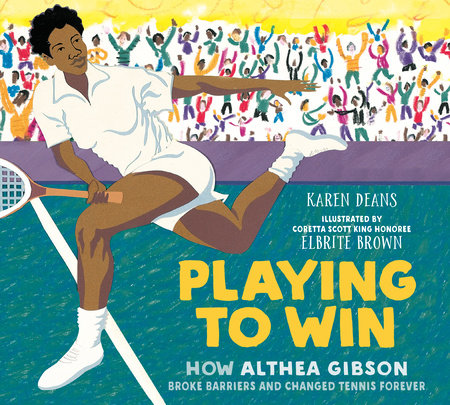
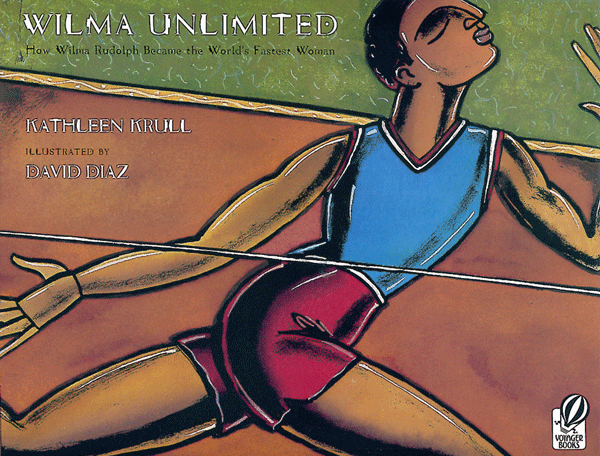
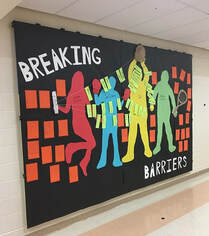
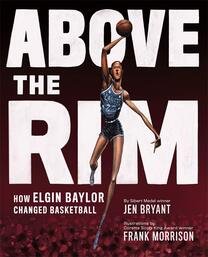
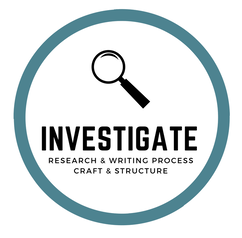
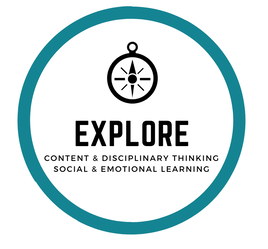
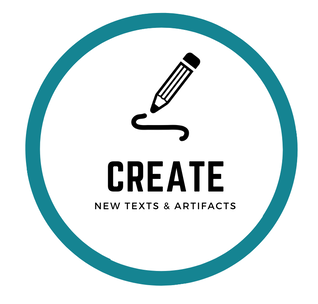

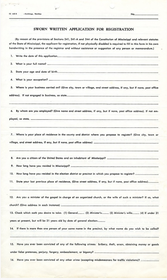
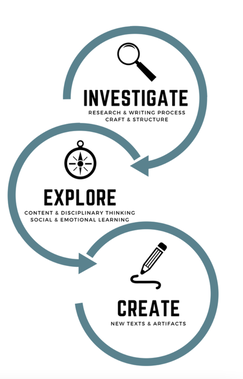

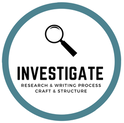
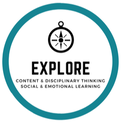

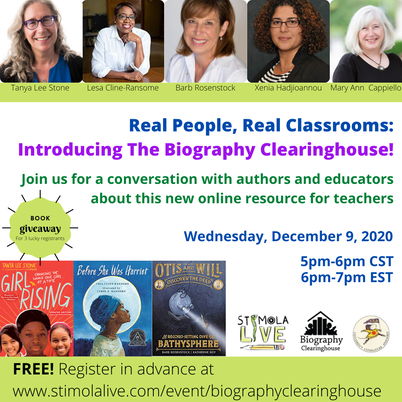
 RSS Feed
RSS Feed